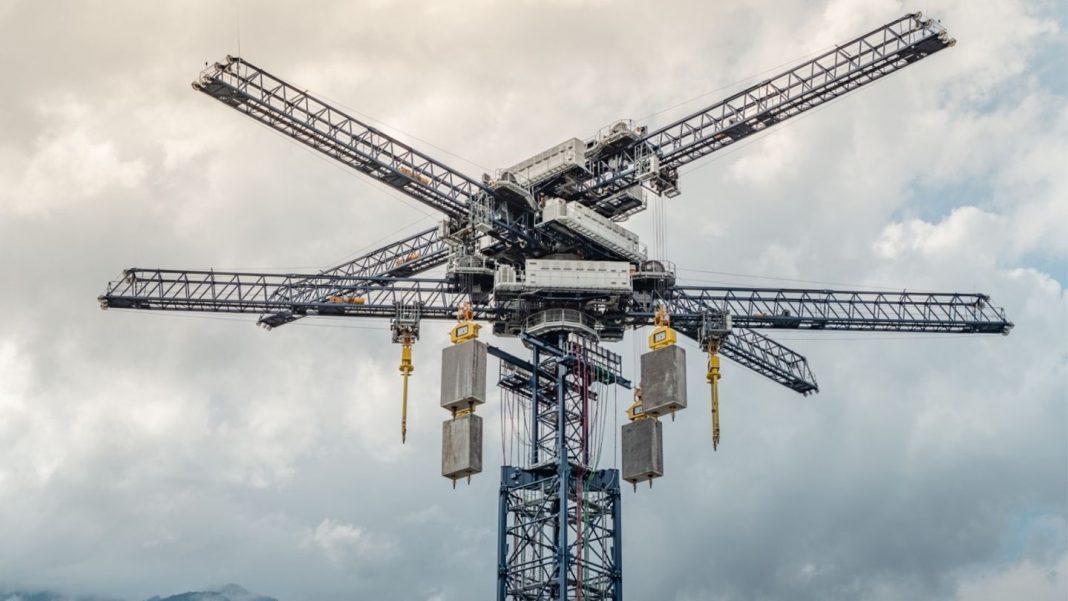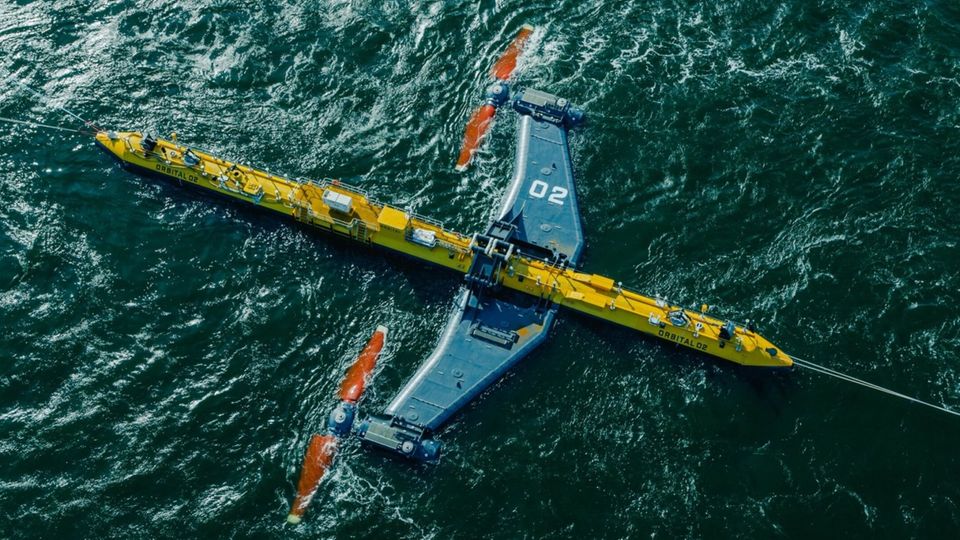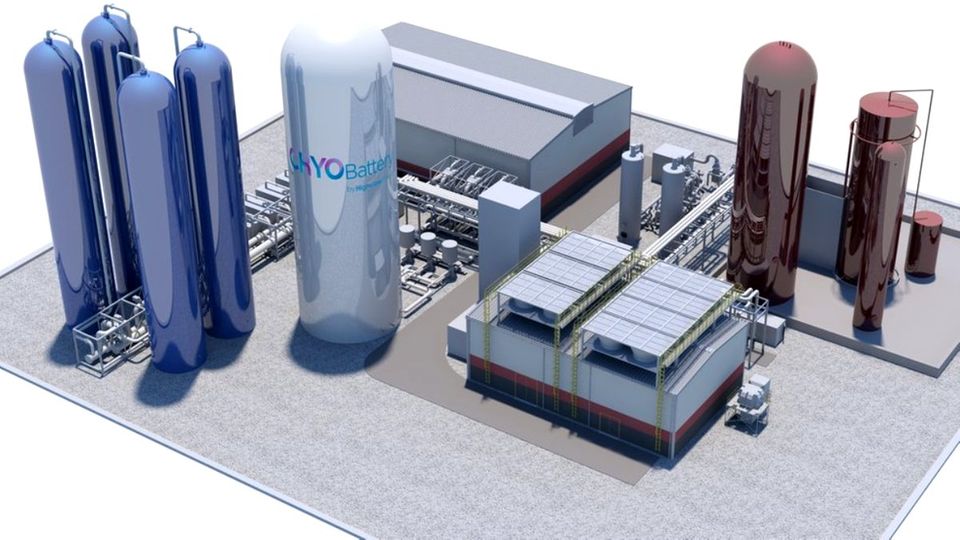Energy Vault
Instead of batteries: Swiss towers store energy with concrete blocks

A prototype is already working in Switzerland.
© Energy Vault / PR
in 2017, Swiss engineers presented their vision of storing natural energy in a tower. After the construction of a prototype, the first commercial plants are to go into operation this year.
Today it is possible to generate very cheap electricity from the sun and wind power. And in particular in the case of photovoltaics, the price decline will continue to progress. The problem is, where does the electricity come from when the sun doesn’t shine or the wind dies down?
Ecologically generated electricity must be stored. One possibility is huge battery systems, and there are exotic experiments, for example by storing energy with compressed or liquid air. The Swiss start-up Energy Vault wants to build huge concrete towers to store the excess electricity. The plans were presented for the first time in 2017 and laughed at by many (“Have Swiss solved the biggest problem of clean energy?”). Nevertheless, the company raised $ 100 million in a financing round, and now another $ 110 million has been added.
Last year, a prototype went into operation in Bellinzona, Switzerland. The technology is reminiscent of a huge children’s toy. Giant cranes tower up concrete blocks of about 35 tons to form a tower. When the green electricity is bubbling, the crane lifts the blocks up. However, if more electricity is supplied than is naturally generated, for example because there is a lull, then the blocks are lowered again. This drives generators that generate the additional electricity required.
Cheaper than batteries
A tower can have a storage capacity of up to 80 megawatt hours and should be able to deliver four to eight megawatts for eight to 16 hours. This technique will not be able to bunker the energy for the winter in the sunny summer. However, it will enable the operators of a wind energy park to reliably supply energy in a predicted corridor. With solar energy, one could preserve the production of the day for the night. Such a tower is 35 floors high and requires the area of a football field. The cost is from eight to ten million dollars. A total of 5000 concrete blocks will be moved. The cranes are controlled by algorithms so that the loading and unloading movement is as efficient as possible. The idea is inspired by hydropower plants in the mountains, where water is already pushed up with excess electricity to feed a hydropower plant if necessary.
So the Swiss came up with the idea with the concrete blocks. Your system does not require a special environment and can be used universally. One of the advantages of Energy Vault is the short latency time of the system. In just 2.9 seconds, the tower can raise its output to 100 percent. According to the Energy Vault, the lifting and lowering of the blocks and the transformation chain from electricity to stored energy will only result in a loss of ten percent.
In addition, the Swiss want to score points with a long service life, the system should be able to work for 30 to 40 years. And even after that, the blocks could continue to be used. They are made from an alternative cement of soil and waste materials. Even with intermediate storage, electricity should still be cheaper than energy from fossil power plants.
The Swiss plant also has the advantage that it does not have to develop new technologies, but uses existing technology. in 2020, the company was ranked among the most important start-ups by the World Economic Forum. This year, the first commercial plants in the USA, Australia and Europe are to be built after the demonstrator in Switzerland.
Read also:
The world’s largest battery goes online in California
Ever bigger, ever higher? Danish Scientists Say We are Building Our Wind Power Plants Wrong
Battery with liquid air-Great Britain builds gigantic power storage





